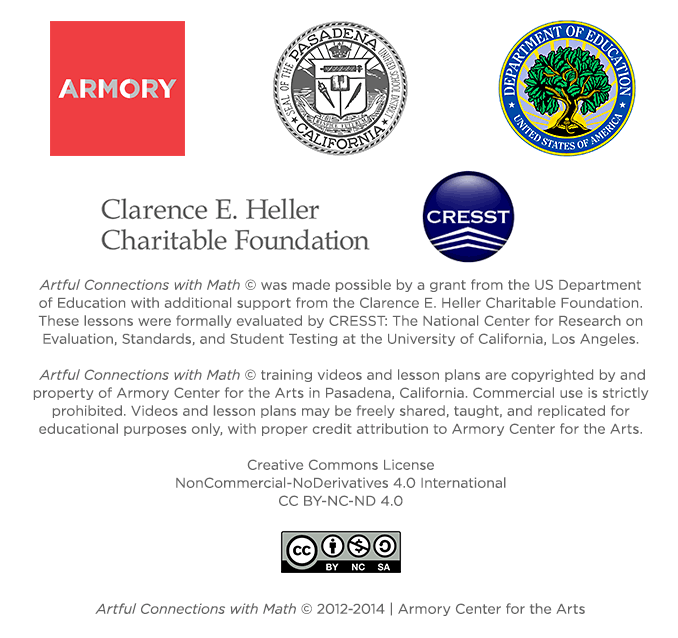Math & Art Integration Videos & Lesson Plans
Artful Connections with Math
Art makes abstract math concepts concrete, understandable, and approachable. Artful Connections with Math harnesses the power of art to advance learning and achievement in math among struggling student populations. This hands-on curriculum engages and motivates all styles of learners, particularly visual and kinesthetic.
These lesson plans and training videos for 2nd and 3rd grade teachers are brought to you as a free public service, courtesy of a three year collaboration between the Armory and Pasadena Unified School District. Follow the links below to access these engaging training videos and download PDFs for each lesson plan. We encourage you to use these lessons in your classroom and share this resource with your colleagues.
2nd Grade Videos
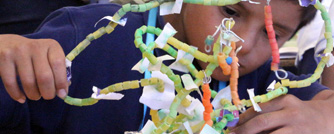
How can we use sculpture to depict a number? This lesson’s goal is for students to group objects in ones, tens and hundreds in order to count to a 3-digit number. They’ll use color and length to visually differentiate between place values, and create an abstract wire sculpture that depicts their 3-digit number.
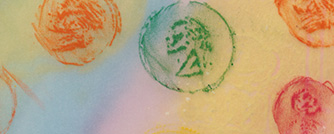
Coin Rubbing & Print Composition
What are the artistic and mathematical attributes of money? This lesson's goal is for students to create a layered composition consisting of coin rubbings, a watercolor wash, and ink prints of coins they design.
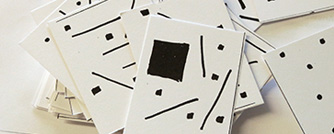
How can we visually depict regrouping? This lesson’s goal is for students to add 3-digit numbers by examining ones, tens, and hundreds and regrouping when necessary. Then, using different sizes of paper to visually differentiate between place values, they will create an abstract paper collage that depicts the sum of their 3-digit numbers both with and without regrouping.
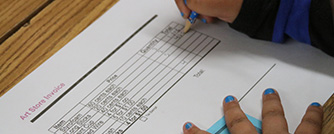
How do artists purchase materials for creating a project? In this lesson, a goal is for students to work within a given budget, create proposals, purchase materials from a classroom “store”, and create a sculpture on a base.
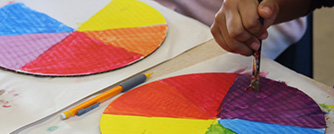
How can fractions and colors be understood as parts and wholes? This lesson’s goal is for students to correlate fraction families with color families by mixing secondary colors and cutting paper circles and rectangles into fractional parts. Then, students will create a mobile that demonstrates how fractional parts combine to make a whole.
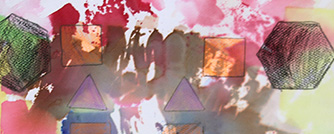
How can we combine and divide shapes to create new shapes? This lesson's goal is for students to use pattern blocks to create overlapping designs of repeated polygons.
3rd Grade Videos
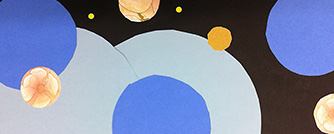
What is the relationship between place value and the concept of scale? This lesson’s goal is for students to create a collage that represents a 4-digit number, by assigning specific colors, sizes, and textures of paper to different place values.
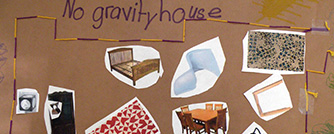
Area Perimeter Blueprint Collage
How do we use math and art to represent our living spaces? This lesson’s goal is for students to create a floor plan collage, using graph paper to calculate area and sewing with embroidery floss to calculate perimeter.
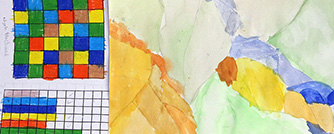
How can we use math and art to show the same data in different ways? This lesson’s goal is for students to create an abstract painting based on the amounts of color in their bar graphs.
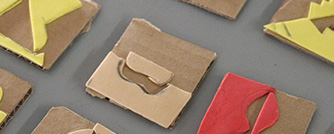
How are inverse relationships used in math and art? This lesson’s goal is for students to explore positive and negative space and create a stamp. They will repeatedly print the stamp as an array on top of a watercolor wash.
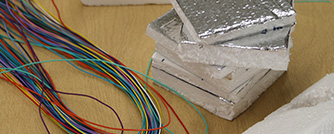
How do artists purchase materials for creating a project? This lesson a goal is for students to work within a given budget, create proposals, purchase materials from a classroom “store”, and create a sculpture on a base.
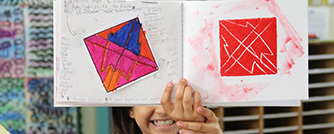
How can we arrange polygons to show rhythm and movement? This lesson’s goal is for students to create a bilaterally symmetrical design with various types of polygons and repeatedly print their design to create radial symmetry.
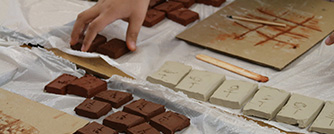
How can we manipulate fractional parts of a whole to form a new whole? This lesson's goal is for students to create an imaginative clay sculpture using fractional geometric and organic pieces of clay.
